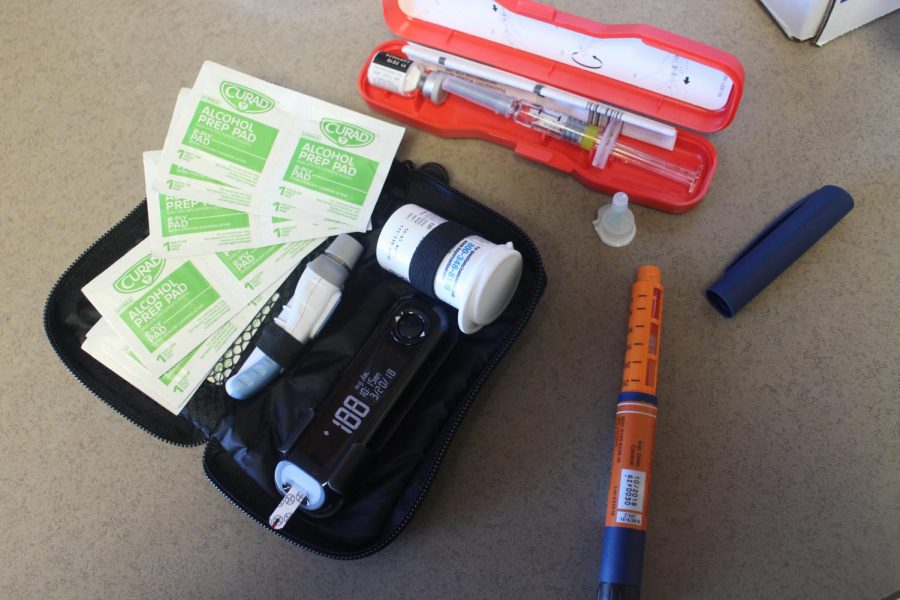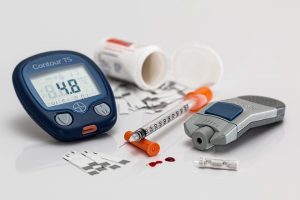The Complications of Being Diabetic
Although it is fairly common, there are many different types of diabetes and it can be difficult to keep track of or even diagnose.
Necessities for diabetics including, an insulin pen, a blood sugar checker, and a syringe and needles.
April 2, 2018
Being diabetic can be complicated enough trying to figure out whether you are type 1 or type 2, and the kinds of medications necessary to take for each. However, it only gets more complicated with the many subsections of the disease, including prediabetes and latent autoimmune diabetes.
Prediabetes is an odd middle where blood sugars are high, but not high enough to be classified as having diabetes. Unfortunately, there are no clear symptoms for prediabetes. Most people with prediabetes discover their condition while being tested for diabetes and are at risk for eventually developing type 2 diabetes. Some common factors include a glucose tolerance test resulting in blood sugars from 140-199 mg/dl.
In addition, there is also latent autoimmune diabetes, or LADA, which is a subcategory of diabetes where the immune system destroys insulin-producing cells.
“With LADA, you lose the ability to produce insulin much more quickly than the typical type 2,” endocrinologist Stanley S. Schwartz said.
Most people with LADA believe they have type 2 diabetes, which can cause complications in their health.
“I didn’t know about autoimmune diabetes. It makes me more worried about whether I might have it because I already have an autoimmune disease. It makes me wonder if I’m more susceptible to the latent autoimmune diabetes,” recent type 2 diabetic, Colleen Kroeker said.
The main issue with this is if a doctor treats patients for type 2 when they have LADA it could cause blood sugars to rise more rapidly and cause further diabetic complications. Dr. George Grunberger encourages patients to ask their doctors about LADA because the only way to test for LADA is to test for antibodies that cost an autoimmune attack with beta cells.






